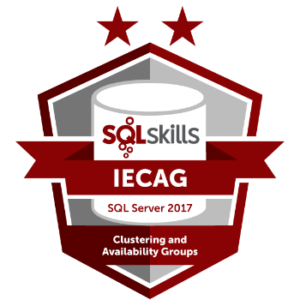I’ve been doing migrations fairly continuously for the past 18 months. PowerShell has been my primary mechanism for many parts of the process, including copying jobs from the source SQL Server to the target. That has worked almost without incident each time. However, recently, an app team noticed that there were SQL Server Agent … Continue reading Fixing Missing SQL Agent Jobs After a Migration
In the previous two parts we’ve reviewed investigating logins to SQL Server, which operate at the top server level. We’ve also reviewed looking at logins at the database level. Today, I’ll be showcasing another couple of ways to view SQL Server security information. Open source provides a lot of fantastic scripts and software. … Continue reading How to Check SQL Server Security Part 3
In a previous post we started reviewing SQL Server security at the server level by looking at Logins. Is that enough though? It definitely isn’t! We need to look at the users at the database level as well. So, let’s do that. Again, the internet is awash with scripts and options so let me … Continue reading How to Check SQL Server Security Part 2
My favorite thing that happened this year was that I was a speaker at the PASS Data Community Summit in November. I presented an online live stream at the world’s largest SQL Server conference, and I did it while in-person at the conference in Seattle! Speaking at the Summit has been a bucket list … Continue reading Speaking at the PASS Data Community Summit
SQL Server indexing basics are critical to query and server performance. Resources, like CPU and disk, are affected by the indexes that you have, or the ones you’re missing. In the StackOverflow2013 database we’re going to look at Badges and users. Specifically, I want to start by seeing what badges a user has and … Continue reading SQL Server Indexing Basics – 7 Lessons Learned
SQL Server professionals may be reluctant to start using PowerShell. After all, you already know T-SQL well and can do a lot with that to manage SQL Server. I’ve been using PowerShell to manage SQL Server for the last 5 years and it has revolutionized how I interact with SQL Server. For example, … Continue reading 6 Reasons to Learn PowerShell
I see a lot of questions on data related Reddit forums and data science groups on LinkedIn about how to get started with SQL. Certainly these people mean that they want to learn the SQL language. I don’t think you can do that long term without setting up a home lab. You need your own … Continue reading Getting Started With SQL Server
As a data professional managing SQL Servers, you need to be thinking about Windows and SQL Server patching. You want to stay up to date, but you also have to be careful because sometimes staying fully up to date comes with the risk that a new patch might break a feature you are … Continue reading SQL Server 2019 CU 16 Introduces Problems for Log Shipping
There’s one sure-fire way to set yourself and your applications up for failure when using SQL Server. I’ve seen all kinds of people do this. It will cost you performance and create maintenance headaches down the road. Let me explain what it is and why it causes trouble. Hit … Continue reading One Key Mistake When Installing SQL Server
As data professionals responsible for SQL Server, it is drilled into our heads that we need to take backups. But, how do we know we actually have backups available to us when we need them? How can we verify that a backup has been taken? Some types of auditing that an employer has to … Continue reading 3 ways to verify that a backup has taken place



